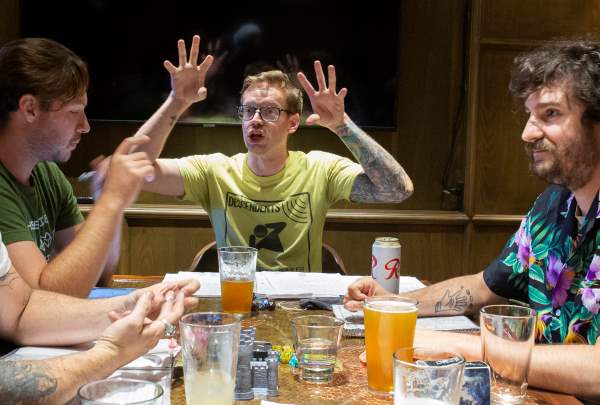It was pointed out me the other day that playing a game of Dungeons and Dragons (D&D) is a great way to get you running awesome meetings at work. As you’ll read, the parallels are uncanny. In this post, we’ll delve into how the practical aspects of running a D&D session can be translated into effective meeting management techniques that lead to effective and productive workplace gatherings.
Preparation is Key
In D&D, a well-prepared Dungeon Master (DM) ensures a smooth and engaging gameplay experience for the players. The same concept applies to running meetings. As such, proper preparation is the foundation of a successful meeting.
Here’s how D&D-inspired preparation can help:
a) Define clear objectives: Just as a DM sets the adventure’s goals and objectives, you should establish clear meeting objectives. What do you want to achieve? What are the key takeaways?
b) Create an agenda: Much like outlining the session’s storyline, create a detailed agenda with time allocations for each agenda item. Stick to it to maintain focus and efficiency.
c) Know your audience: In D&D, the DM tailors the game to the players’ preferences. Similarly, understand your meeting participants’ needs and tailor the content to make it relevant and engaging for them.

Engage and Empower Participants
D&D’s collaborative nature promotes engagement and empowerment among players. The most memorable games are when the players take center stage and have agency in the outcome of the adventure. In your meetings, the same principles can foster participation and decision-making.
Consider these practical approaches:
a) Encourage participation: Similar to players actively engaging in the game world, create opportunities for participants to contribute during the meeting. Encourage open discussions, question-and-answer sessions, and feedback.
b) Delegate responsibilities: In D&D, party members have specific roles. In meetings, assign roles or responsibilities to participants to make them feel invested and accountable for the meeting’s success. For instance, designate a timekeeper, note-taker, or discussion leader.
c) Empower decision-making: Just as players make crucial in-game decisions, allow participants to have a say in important matters during the meeting. Encourage consensus-building and gather input to arrive at well-informed decisions.

Adapt and Manage the Flow
In D&D, the game’s flow can change dynamically based on players’ choices. Adapting to these changes is a vital DM skill. In meetings, the ability to manage the flow and adapt to unexpected developments is equally essential.
Practical applications include:
a) Stay flexible: Just as a DM adapts to players’ choices, be flexible during the meeting. If the discussion veers off track or a new issue arises, address it without derailing the entire meeting.
b) Time management: Keep a close eye on time, much like a DM managing a gaming session’s pacing. Ensure that discussions don’t overrun, and use time management techniques to keep the meeting on schedule.
c) Summarize and document: After a D&D session, the DM often summarizes the events and updates the campaign notes. Similarly, at the end of a meeting, recap key points, decisions, and action items, and ensure these are documented and distributed to participants.
Final Thoughts on Running Awesome Meetings
Dungeons and Dragons offers practical insights for running awesome meetings at work. By applying D&D-inspired principles like thorough preparation, engaging and empowering participants, and adaptability in managing the flow, you can elevate your meeting management skills to facilitate more productive and efficient workplace gatherings. So, embrace the Dungeon Master within you, and lead your team through epic meetings that achieve their objectives and keep everyone engaged and motivated.

